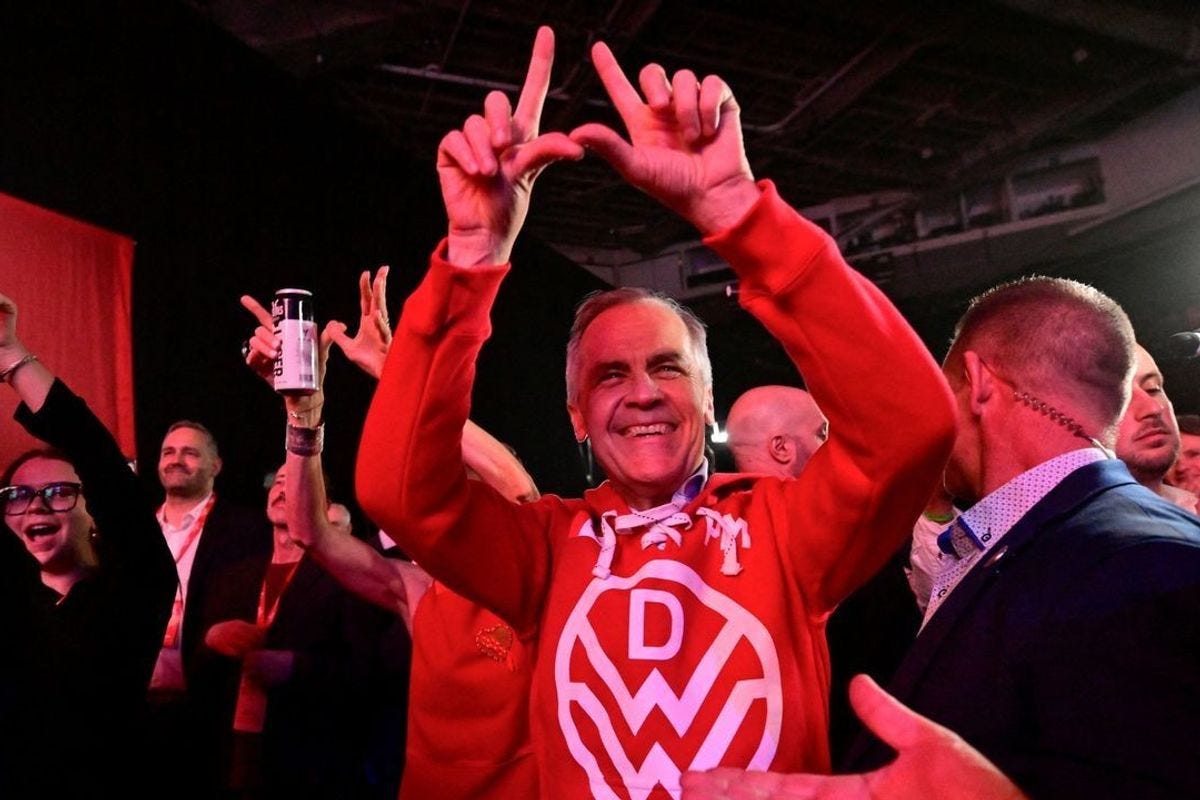Carney’s Comeback: Liberals Clinch Minority Win
The 2025 federal election showcased a historic political comeback and a significant reshaping of Canada’s political landscape. In just three months, the Liberals overcame a staggering 23-point gap in voting intentions to secure a narrow 2-point lead on election day. While Conservative support remained relatively stable—finishing with 41% of the popular vote compared to 44% three months prior—the Liberal resurgence came largely at the expense of the New Democratic Party (NDP), which suffered its lowest-ever share of the popular vote at 6.3%.
This election shows how voting patterns might shift should Canada start to move toward a two-party system, particularly outside Quebec. The 2025 campaign was among the most polarized in recent memory, with the Liberals and Conservatives locked in a battle that left little room for others. The NDP's collapse and the Bloc Québécois’ retreat to its traditional base highlight a political environment increasingly defined by binary choices. The divide in votes came down to urban and rural voting patterns, with Liberals dominating major urban centres and Conservatives sweeping rural Canada. This growing urban-rural divide mirrors political trends across other Western democracies and poses long-term questions about national unity.
What Comes Next?
Prime Minister Mark Carney is expected to adhere to standard practice and form a cabinet within the first two weeks of May. Carney will likely be maintaining his predecessors’ commitments to having a gender-balanced cabinet, and is expected to keep François-Philippe Champagne, Mélanie Joly, and Dominic LeBlanc, all of whom played a key role in the previous government’s cabinet. He is also expected to invite some newcomers into the cabinet, among them some high-profile individuals that were elected for the first time such as former Quebec finance minister Carlos Leitão, former Vancouver mayor Gregor Robertson, former journalist Evan Solomon and former corporate executive Tim Hodgson. Parliament is currently expected to reconvene on May 26, commencing with the election of the Speaker, followed by the Throne Speech outlining the government's agenda.
Notably, Conservative leader Pierre Poilievre will not be returning to Parliament as he lost his long-held Carleton seat to Liberal newcomer Bruce Fanjoy. This major conservative upset raises the question: how long will party leader Pierre Poilievre remain without a seat in the House of Commons? If a Conservative MP steps down to leave room for Poilievre to run in a by-election, the rules stipulate that the government can wait up to 180 days before issuing the election writ, with an election campaign that may take up to 50 days. Pierre Poilievre could be without a seat in the House of Commons until early 2026.
Should Poilievre remain committed to his election night promise to continue leading the party, the Conservative caucus would use every trick in the book to prevent the business of the House from moving forward if they felt the Government was trying to delay the re-entry of their leader into the House.
In addition, the Conservative Party is required as per its constitution to conduct a leadership review at the first national convention following an election where the party did not win. While Poilievre may maintain support from his caucus following losing his seat, tensions are now clearly apparent within the conservative movement. In any case, Poilievre’s fate will be tested by party delegates within the year.
Meeting the Moment
Looking ahead, one of the biggest unknowns is Carney’s plan to reset Canada’s relationship with the United States. He has repeatedly emphasized the need for Canada to shift away from the current Canada-U.S. relationship and has signalled a strong desire for diversifying strategic partnerships, particularly with those in the European Union. Early signs suggest President Trump is willing to engage in negotiations with Canada, calling Prime Minister Carney a “very nice gentleman” just one day after the election results were declared, and the two leaders now scheduled to meet in the White House within a week. Despite perceptions of cooperation from President Trump, Carney is not losing sight of European priorities, as he also spoke with French President Emmanuel Macron about deepening defence and commercial ties on Carney’s first day elected.
Carney’s leadership will be tested on the international stage at the upcoming G7 Summit in Kananaskis and NATO Summit in The Hague, where his ability to assert his leadership will be scrutinized both at home and abroad.




